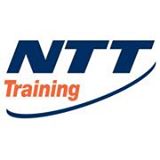|

National Technology Transfer, Inc.
presents
PLC Automation Systems (2-Day) On-Site Training
Participants learn how the PLC is integrated with operator interfaces (OIs), human machine interfaces (HMIs), and network I/O systems.
Course Description/Agenda
Participants learn how the PLC is integrated with operator interfaces (OIs), human machine interfaces (HMIs), and network I/O systems.
More than 60% of class time is hands-on programming, uploading and downloading exercises to and from the PLC. The program thoroughly examines PLC architecture, including input and output systems, ladder logic vs. relay logic, relay instructions, the role of timer delays, number systems, and the sizing and selection of PLCs. Troubleshooting elements cover installation precautions, wiring requirements, debugging and diagnostic tools.
Continuing Education Units (CEUs) and Contact Hours
Upon completion of this training program, the attendee will receive a certificate of completion. Please contact your state or local licensing agency to determine if this training program is accepted for Continuing Education recognition by the agency.
WHAT YOU WILL LEARN
Topics covered during this training include:
- Modern Systems Overview
- Hardware Components
- Ladder Logic Review
- Human Machine (Operator) Interfaces (HMIS) Overview
- Human Machine (Operator) Interfaces (HMIS) Exercises
- Motion Control
- PID & ANALOG Control
- I/O BUS Network Overview
- Networking Communication Exercises
- Diagnosing Networks
WORKSHOP AGENDA
Modern Systems Overview
- PLC architecture
- Operator interfaces
- PLC communication networks
- Programming, troubleshooting and diagnostic tools
Hardware Components
Ladder Logic Review
- Relay type instructions
- Serial and parallel circuits
- Timer instructions
- Counter instructions
- Register instructions
- Compare and math instructions
- Analog and scaling instructions
Human Machine (Operator) Interfaces (HMIS) Overview
- Suggested HMI design guidelines
- HMI to PLC communication options
- HMI/PLC development process
- HMI to PLC database layout
Human Machine (Operator) Interfaces (HMIS) Exercises
- Create structured data tables in PLC and HMI
- Identify HMI/PLC communication parameters
- Create operator screens
- Design digital control elements—push buttons and indicators
- Multistate indicators
- Bar scales and analog control elements
- List files and alarming methods
- Fault logging and predictive maintenance
- Importing and exporting tags
- Program real-time sequence-monitoring systems for operations, faults, and alarms
Motion Control
- Create basic automatic processes
- Create motion-monitoring programs for displaying system faults
PID & ANALOG Control
- Control analog processes and configure basic PID functions
- Program and monitor analog systems for alarms and faults
I/O BUS Network Overview
- Interface and communication options
- Byte wide, bit wide, and process networks
- Wiring, power, and termination methods
- Network performance calculations
- Communication modules
- Bus network addressing
- Determining the right network for your application
Networking Communication Exercises
- Configure communication modules including ethernet and serial
- Address and configure remote I/O
- Wiring connections
- Troubleshooting network problems
- Interface network with HMI
- Programming and monitoring network and I/O alarms and faults
Diagnosing Networks
- Troubleshooting network errors
- Cabling, connection, and power faults
- Network analysis tools
WHO SHOULD ATTEND THIS WORKSHOP
This training is beneficial for anyone who encounters control systems in their daily functions, such as engineers, maintenance, operations and management personnel.
People who will benefit from this training include:
- IT Technicians
- Instrumentation Technicians
- Maintenance Technicians
- Automation Technicians
- Multi-craft personnel
- Anyone who needs cross-training on PLCs
|
 Add to favorites
Add to favorites
 Email this page
Email this page
|
 Add to favorites
Add to favorites Email this page
Email this page

 On-Site Training
On-Site Training Seminar
Seminar